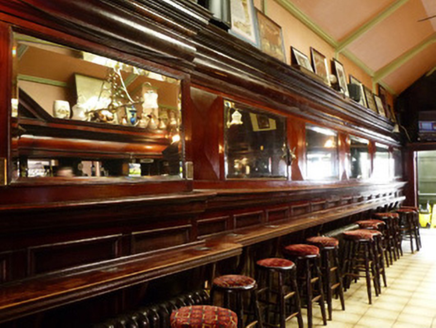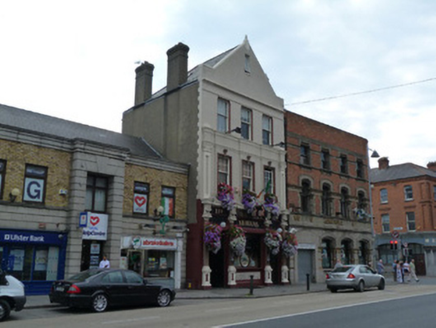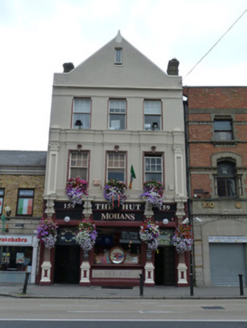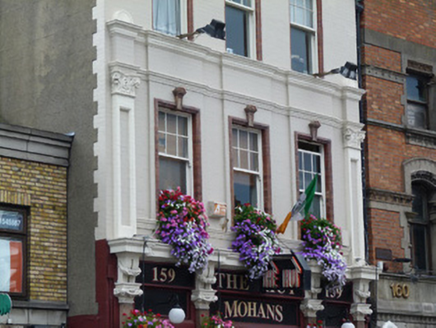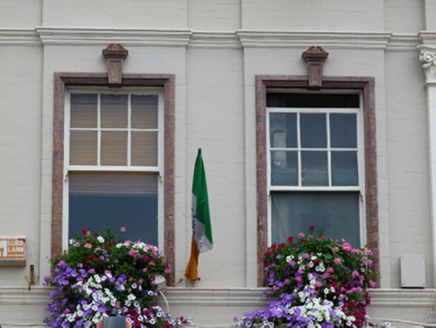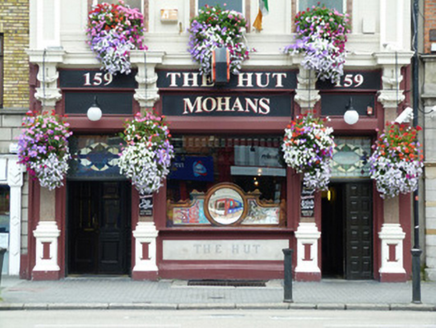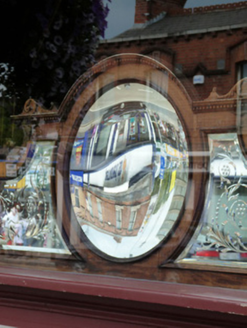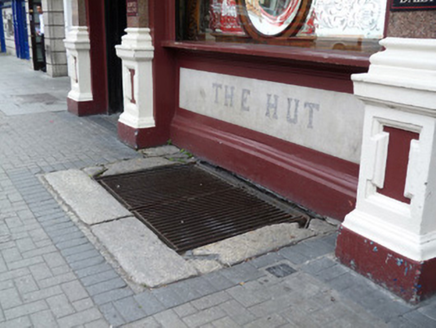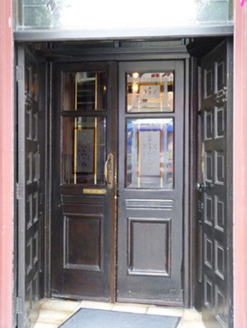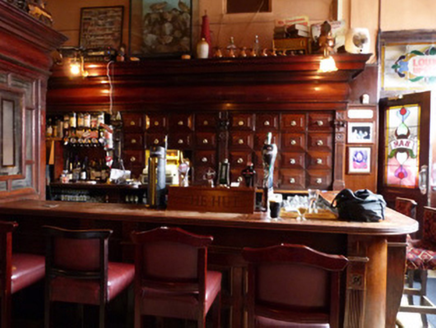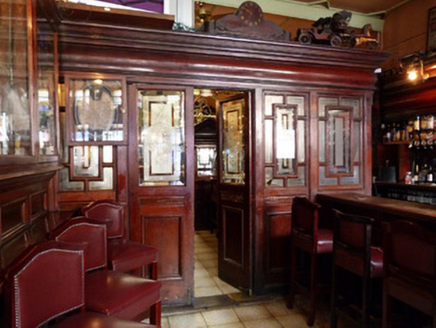Survey Data
Reg No
50060229
Rating
Regional
Categories of Special Interest
Architectural, Artistic, Social
Original Use
Public house
In Use As
Public house
Date
1895 - 1900
Coordinates
315060, 235901
Date Recorded
27/08/2014
Date Updated
--/--/--
Description
Attached three-bay three-storey public house over cellar, built 1898, with dormer attic, late nineteenth-century shopfront to front (west) elevation, return to rear elevation. Single-span pitched artificial slate roof, gabled to front and hipped to rear with cement rendered chimneystacks, and having replacement uPVC rainwater goods. Painted brick walls to front elevation with painted brick pilasters with foliate capitals to first floor and rendered string courses to first and second floors. Ruled-and-lined cement-rendered walls with exposed brick quoins to north elevation. Square-headed window openings with stucco surrounds and keystones and continuous rendered sill course to first floor and shouldered-arch openings with stucco surrounds and continuous rendered sill course to second floor, both with six-over-one pane timber sliding sash windows. Late nineteenth-century shopfront to front elevation with marble pilasters and fluted console brackets framing painted timber fascia. Square-headed window opening on stone stall riser with plate glass display window having distorting mirror. Square-headed door openings with timber panelled doors and stained-glass over-lights. Interior containing early timber joinery.
Appraisal
This public house makes an interesting contribution to the architectural character of the area around Doyle's Corner. Its traditional late nineteenth-century shopfront retains a number of early features including an unusual distorting mirror. A good Victorian interior survives intact. A public house was in operation on this site as early as 1832 and, ten years later, Michael Campion was named as the proprietor of a grocery and toddy shop. The Hut was described as a possible meeting place of extremists in a report (14th November 1894) by Assistant Commissioner John Mallon (1839-1915) of the Dublin Metropolitan Police [NA DMP/9246/5]. The hut was occupied in the late 1890s by Hugh Temple (1861-1906), a grocer and vintner, and an increase in value from £10 to £80 between 1897 and 1899 suggests that the property was redeveloped at this time. It is possible the redevelopment was to designs by John Hampden Shaw (1856/7-1932) of Westmoreland Street.
